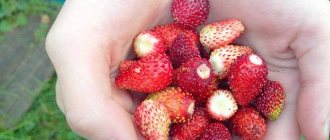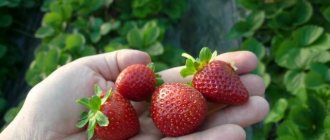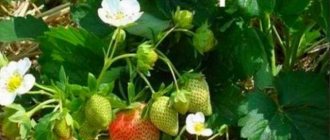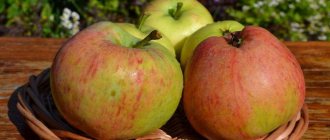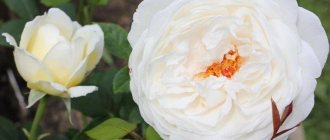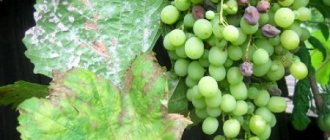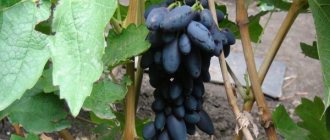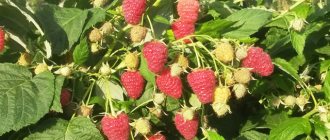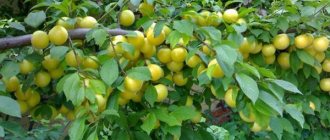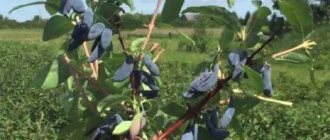Leeks are one of the vegetables known to mankind since ancient times. It originates from Mediterranean countries, and today is actively grown in Europe, North and South America, and India. This type of onion is not so popular among domestic gardeners, but those who tried to grow it appreciated its excellent taste and suitability for a wide variety of dishes. A particularly valuable variety is the Carentan leek.
Characteristics of Carentan leek
It is worth noting that the Carantan onion variety is a European winter-hardy plant; it is characterized as late-ripening. The planting-harvesting time range ranges from 5 months, but sometimes extends to 7. The growing season under normal weather conditions is 6 months, sometimes more. They like to grow this variety for several reasons, one of them is that the freshness of the greenery is maintained even with the onset of cold weather and until the first frost.
The Caranta leek has a small, cylindrical stem that grows up to 25 cm. It bears fan-shaped leaves. The middle part of the stem is up to 6 cm thick. The leaves of this variety are dark green in color, have a waxy coating, and fit quite tightly to each other. The stem of the Carentan leek is white, but turns green closer to the leaves.
Gardeners harvest in September and October. If the first frosts come, this is not a problem for the onions: they will in no way affect them negatively. If snow falls, leeks do not need to be dug up, but if there is little snow, they are dug up and stored in cool rooms, even for several months.
Reviews from breeders indicate that this crop has excellent yield: up to 4 kg per 1 sq. m, and the weight of one bulb can reach up to 300 g.
Using vegetables in cooking
The most delicious and valuable part of it is used for food: the false stem, which is why it is grown. It is he who can most often be seen in the photo.
Possessing a semi-sharp mild taste, this type of onion, like the entire Amaryllis family, is used in salads, casseroles, side dishes, meat and vegetable broths. Carentan leeks are rich in potassium, phosphorus, iron, vitamins, and essential oils.
Carentan leek is a 2-year-old plant. In the second year of the growing season, it throws out a long stem on which a flower is formed. After flowering, you can collect small black seeds, which are suitable for storage for 2-3 years.
Agricultural technology of Karantan onion
In the southernmost regions, leek seeds are often sown directly on ridges laid out in the open air. In the Non-Black Earth Region, Karantan onion, due to the long duration of its growing season, is grown exclusively by seedlings.
Sowing leek seeds for seedlings
- Carantan onion seeds are sown for seedlings from the last days of February until mid-March.
- Special planting containers or shallow (8-10 cm high) wide boxes are washed well, dried and filled with soil similar to that in which leeks will subsequently grow in the beds. The substrate in the planting containers is slightly compacted and, for the purpose of disinfection, is spilled with a warm, medium-pink solution of potassium permanganate.
- 4-5 days before planting, leek seeds are immersed in water heated to 50°C for 20 minutes, after which they are wrapped in a wet cotton rag. The package with seeds is placed on a saucer and placed in a dark place. The fabric in which the seed is wrapped is moistened as it dries. To speed up germination, leek seeds from your own collection can be treated with a solution of Zircon, Epin or aloe juice.
From 1 sq.m. You can harvest up to 4 kg of leeks
- On the day of sowing, the seeds are slightly dried. On the surface of the moistened substrate, grooves are drawn, spaced 5 cm from each other, after which swollen seeds are placed in them at three-centimeter intervals and covered with a centimeter layer of soil.
- Containers with sown seeds are covered with glass and placed in a greenhouse, where the temperature is maintained at 21-25°C.
- The cover glass from the boxes is removed every day and wiped to remove dew. The substrate is regularly moistened with a spray bottle.
Basics of Growing Leeks from Seeds
If you are going to grow this vegetable from seeds, then it is worth knowing some aspects. It is recommended to plant seeds in early March, not earlier, because this is a 2-year-old plant, and the seeds ripen only at the end of the second year of vegetation, so they are planted only in the spring. You need to sow the seeds of leeks in the greenhouse approximately 2 months before planting in the ground.
You must adhere to these simple rules.
- Firstly, the seeds are pre-soaked in warm water and kept for 3 days.
- Secondly, they are sown in a greenhouse to a depth of 2 cm.
- Thirdly, leave 4-5 cm of free space between the rows.
As for the temperature regime, seed germination should occur at a temperature of 21-23°C. As a result of all of the above, the emergence of leeks from seeds can be observed within 2 weeks. After the first seed shoots appear, the temperature regime is adjusted: in the daytime it should be reduced by 2-3°C, and at night by 10°C.
When seedlings grow in a greenhouse, it is necessary to feed them 2 times with ammonium nitrate and superphosphate. If 3-4 leaves appear, it means that the seedlings can already be planted in open ground, but be sure to water them before doing so.
After 3 months, approximately at the beginning of summer, the plants are transferred to a permanent place where they are going to be grown. To do this, you need to prepare the required number of furrows, plant seedlings in them, and fertilize them for 2 months. A natural substrate rich in potassium, nitrogen and phosphorus is suitable for these purposes.
Rules for planting leeks
Before planting seedlings, you must follow the following rules:
- Carefully dig up the soil;
- Control the distance between furrows to about 25-30 cm;
- The depth of the furrows should be about 10 cm;
- There should be a distance of up to 20 cm between the bulbs, since in the future the plants will grow in width. If you plant closer to each other, then you will need to thin them out later;
- Adhere to the norm for planting and growing: no more than 25 plants per 1 square meter. m;
- Before planting, it is necessary to shorten the roots and stem length by one third. Such manipulations are carried out to increase productivity.
It is better to grow leeks in moist and rich floodplain soils rather than in acidic ones. If you have acidic soil, then the seeds are treated with lime or dolomite flour.
It must be remembered that this plant needs an abundance of light, so the cultivation itself must begin with choosing a suitable location. This type of onion does not like places where garlic, carrots, cucumbers, and other onions grew. A good harvest will be in those places where cabbage, tomatoes, peas, and beans grew.
Growing leeks: choosing and preparing a site
Leek is a cold-resistant and easy-to-maintain garden crop, but it is very demanding on the quality of the soil. Caranta onion develops correctly and forms a thick white “leg” only on highly fertile, well-aerated loamy soils with a neutral reaction. Heavy compacted clay soil, light sandy loam depleted of nutrients and acidic soil are of little use for growing leeks.
Advice. To neutralize the excessive acidity of the substrate, in the fall, before digging the beds, sprinkle dolomite flour over the area intended for growing leeks at the rate of 03-0.5 kg/m2.
Caranta leek is a biennial plant.
To enrich the soil with nutrients, in the fall, mineral and organic fertilizers are added to the ground in the area chosen for planting leeks - 1 bucket of compost, a matchbox of nitrophoska and 2 teaspoons of urea (all this is added to 1 sq m of beds).
In addition to the quality of the soil, when choosing a place to plant Carantan onions, they pay attention to the location of the site and what crops grew on it last season.
For leek beds, choose a sunny place with low groundwater levels, where beans, potatoes, cabbage or peas were previously grown.
Attention! Leeks cannot be planted in beds where any type of onion grew for the next four seasons!
In the northern regions, leeks are grown in seedlings
How to care for Carentan leeks
Caring for this type of onion is not difficult; you need to follow simple rules for caring for onions.
- Hill up at least 3 times.
- Hilling up must begin by adding ash to the soil.
- Water periodically, especially during the 2nd growing season, once every 5 days.
- It is not recommended to treat with chemicals.
- Feed with organic and mineral fertilizers at least 4 times. You can use bird droppings and mullein. After this, the leeks should be watered and the soil between the rows loosened.
- To make the white part of the onion longer and denser, the plants should be covered with peat in early autumn.
- The harvest must be harvested before the first frost, although this onion variety is frost-resistant.
Caranta leeks need to be dug up with a shovel and the rough leaves cut off. Also, cultivation involves digging the onions into the sand, and they can be stored in cool rooms. At the same time, it is necessary to regularly inspect the plants and discard stems that have deteriorated.
Description of the variety
The variety tolerates frost well and is suitable for the central and northern regions of Russia. It has an aromatic taste and retains vitamins until late autumn. Growing onions from seeds is not difficult and even a novice gardener can handle it. If you follow all the rules of care, you can harvest a generous harvest from one hundred square meters of land, which will weigh about 400 kg.
This variety has high taste qualities. Thanks to its very delicate feathers, appetizing aroma and slight spiciness, people try to add it to all vegetable salads. During heat treatment, bitterness is replaced by a sweetish taste. Carentan onion is very often used for dietary dishes or as an independent product, due to its rich vitamin composition and almost complete absence of calories.
Characteristics and description
Karantasky is an old variety of leek, bred in the USSR. Today its distributor is AGROFIRMA AELITA LLC. Included in the State Register of Russia in 1961. It can be cultivated in private household plots in all regions of the Russian Federation. The variety is a late-ripening variety; the plant harvest will be ready by 125-175 days after shoots appear.
According to the description of the originator, the Karantansky leek has the following characteristics of the variety:
- plants are medium in height (50-90 cm);
- the feather is flat, spreading, medium-dense, fan-shaped;
- the leaf is wide, of medium length, dark green, covered with an intense waxy coating of bluish color;
- white at the base and light green closer to the leaves, a cylindrical false stem, from 10 to 25 cm in height and 4-6 cm in diameter;
- The taste of onions is pleasant, delicate, slightly spicy.
The yield of Karantan leek is 2.1-2.5 kg/m2. The marketability of the collected products is very high - 98-100%. One plant weighs from 200 to 325 g.
The white false stem is used for food and is considered a dietary product. It helps improve digestion and gallbladder function. Carantan leek is consumed fresh in salads, added to soups, pizzas, side dishes, and used for pickling, canning, pickling, and freezing. When processed, onions lose their pungency and acquire a sweet taste. Fresh leeks can be stored for quite a long time if provided with the right conditions.
Taste and vitamin qualities of the Karantan variety of leeks
The white part of the false stem and leaves are usually used for food. The taste qualities have made Karantansky an excellent ingredient in all kinds of salads. Usually this variety is used fresh. Leeks are extremely useful because they contain 3% proteins and 12% carbohydrates, calcium, iron, phosphorus, copper, potassium, vitamins A, B, H, PP and E. The composition of trace elements makes Karantansky a suitable product for increasing hemoglobin levels in the blood, for problems with the liver, gastrointestinal tract functioning and metabolic disorders. It is especially useful to eat this crop in the spring.
Attention! The vitamin C content in leeks is approximately 10 times higher than in onions. And there is more beta-carotene than in carrots.
Advantages and disadvantages
Leek of the Karantansky variety is distinguished by a number of advantages, for the sake of which it is planted on the plots of an increasing number of gardeners cultivating this crop. For example, this is what:
- seeds are inexpensive;
- the false stem includes a lot of vitamins and minerals;
- has low calorie content and pleasant taste;
- This leek has good yield;
- in the southern regions, you can leave part of the leek before winter, covering it with mulch, in order to get the earliest production in the spring.
- cold resistance;
- disease resistance.
The disadvantages of Carantan leek are its susceptibility to viral mosaic and onion fly (adults gnaw tunnels in the above-ground part of young plants, and larvae - in the underground; pests do not touch mature leeks).
Possible diseases
If the onion is provided with proper care, it will develop well and delight the gardener with its high-quality harvest. But do not forget about parasites that slow down the growth of the plant. If pest control is not started in time, the plant may simply die. Insufficient watering, as well as waterlogging, leads to fungal diseases.
- Most often, carentan onions suffer from onion flies. The adults chew through the green feathers and lay larvae, which in turn feed on the white bulb. After this, the plant dies. Bushes that have suffered from onion flies are destroyed, and the land where the bush was located is treated with tobacco decoction. This is done so that the infection does not affect neighboring bushes. You can also plant a bed of carrots next door. Onion flies and larvae cannot tolerate its smell.
- There is also a disease called viral mosaic. Such a virus can be distinguished by tiny dots and white striped sections. If measures are not taken in time, the onion feathers are deformed into an accordion, growth stops and over time the plant simply dies. If the disease has reached the inflorescences on a bush that was left for seeds, it must be destroyed. Since the virus has already managed to infect the planting material.
- You should also be wary of a fungal disease such as cervical rot. This fungus kills leek and garlic crops. It is very difficult to detect this type of disease. For this reason, mostly affected and healthy seeds are stored together in one container. It is possible to identify a disease after it can no longer be saved. This can be seen by the rotting of the bulb itself, after which the entire bush becomes like mucus. To prevent the disease in the future, before planting seeds in the ground, it is necessary to disinfect the seeds with fungicides.
Agricultural cultivation technology and care
Caranta leek is a late-ripening variety and has a long growing season. On personal plots, gardeners grow it from seeds. In the southern regions, sowing directly into open ground is possible. In areas with colder climates and short summers, the seedling method is common. Of particular importance when cultivating crops is proper preparation of beds and high-quality subsequent care.
Leeks give a good harvest only on well-cultivated fertile soils with a neutral reaction. The best results can be expected on light loams, with a deep arable layer and sufficient air and moisture permeability. Acidic soils without prior liming, heavy clays and sandy soils are not suitable for growing the crop. In the latter case, the onion often lacks nutrition, since all substances are quickly washed into deeper layers and become inaccessible to the plants. Shading of the beds and the proximity of groundwater also does not have the best effect on the harvest.
Leeks are cultivated after cabbage, representatives of the legume family, and potatoes. You can also place it after tomatoes and cucumbers. Plants should not be planted in a place where any type of onion or garlic previously grew. It is recommended to return the leek to its original location after 3-5 years.
The preparation of the planting site is carried out in the fall. The beds are cleared of weeds. For deep digging, add up to 10 kg of compost or humus, from mineral fertilizers 20 g of nitrophoska, 6 g of urea per 1 m 2 of area. Depending on the initial condition of the soil, additionally add:
- dolomite flour or lime (on acidic soils 1-2 weeks before digging);
- disintegrants (in heavy clay areas);
- peat and clay soil (on sandy soils).
Growing Karantansky leek seedlings from seeds begins in February - March. Plants are transplanted to a permanent location at the age of 55-65 days, depending on the region and weather conditions, in May - early June. Plastic cups, peat pots, and deep cassettes are suitable for forcing leek seedlings. Prepare fertile soil for plants yourself or buy ready-made soil mixture for vegetables in the store. Growing can take place on a windowsill or in a heated greenhouse.
Self-collected seeds obtained from 2-year-old plants are pre-disinfected in potassium permanganate or fungicides, soaked in warm water, growth stimulants, and germinated. The nigella from the bags is not pickled (it has already been processed); all other procedures are performed as desired.
Seeds are buried 0.5-1 cm in moistened soil, leaving 2-4 cm between them in a row and 5 cm between rows, or sown one at a time in individual containers. The top of the container is covered with glass or film (when grown on a windowsill), and the temperature is maintained at 22-25 ˚C until seedlings appear. In such conditions, the first shoots appear on the 10-15th day.
Indoors, the containers are moved to a well-lit place and the daylight hours are set at 12 hours. Both at home and in the greenhouse, in order to build up the root system and prevent feathers from being pulled out, Carantan leek seedlings are kept for a week at a temperature of about 15 °C. During the rest of the period, the regime is set: 20-22 °C during the day and 15-16 °C at night.
Features of cultivation
Seeds remain viable for two years, so you need to carefully monitor the “freshness” of the seed. The plant reproduces after winter. Due to the long growing season of this late-ripening variety, it is grown as seedlings in the middle zone.
Leek seedlings
Sowing
The procedure for sowing seeds for seedlings is carried out in mid-late March. Before sowing, the following steps must be taken.
Step 1. Prepare the boxes. Small boxes, containers, bowls are used. Most often, seedlings are grown without picking. The container must be disinfected. Fill with soil.
Seedling box with soil
Step 2. The soil needs a fertile, light structure; you can add sand to the humus peat.
Step 3. Seeds are prepared for planting (if they are not treated by the seller) by soaking in stimulants. This could be Epin, Kornevin, Zircon, aloe juice.
Kornevin
Step 4. But before using stimulants, it is recommended to soak the seeds for a day in hot fifty-degree water.
Example of seed soaking
Step 5 . And after stimulation, carry out disinfection by soaking for half an hour in a solution of potassium permanganate of medium intensity.
Potassium permanganate solution for soaking seeds
Step 6 . Sow the seeds in furrows 1 cm deep. The distance between them is 5 cm. Since picking is undesirable (seedlings have very fragile roots that are easily damaged), there is no need to thicken the crops.
Sowing leek seeds
Step 7. The seeds are covered with soil, moistened, and left to germinate at room temperature in the range of +20°C...+22°C.
Video - Sowing seeds
Features of the variety
Leeks are a herbaceous garden crop that grows up to 40 cm in height. After planting, the plant forms a root system and a false bulb. The aerial part consists of green feathers arranged in a fan.
In the second year, the leek grows a peduncle with pinkish flowers collected in inflorescences. The seeds are collected in August. Planting material remains viable for 2 years.
Description of Carantan leek:
- late maturation;
- the period from the appearance of sprouts to harvesting is 130-180 days;
- height 30-50 cm;
- cylindrical false bulb shape;
- the white part of the bulb is from 10 to 25 cm long, 4 cm in diameter;
- powerful green feathers with a waxy coating;
- delicate semi-sharp taste;
- plant weight from 200 to 350 g;
- high frost resistance;
- yield up to 5 kg per 1 m 2.
Onion of the Karantansky variety is a dietary product. It is used fresh and added to homemade preparations for the winter. Onions retain their properties when frozen.
The culture is rich in vitamins and minerals, improves the functioning of the digestive system and gall bladder. The Karantansky variety has low calorie content, which allows it to be used in the diet.
Fresh leeks are used with caution for diseases of the duodenum and stomach, kidneys, bladder, and the presence of kidney stones.
What is the Karantansky variety?
This variety of popular garden crop is considered late-ripening. From planting seeds to collecting leaves, at least 5 months pass (maximum - up to 7). The growing season of leeks varies between 125 and 200 days. But the Karantan variety will delight you with greenery until the first frost. Typically, harvesting occurs from September to early November and lasts even after the slight frosts characteristic of this period of the year. And in general, the variety tolerates winter well, since it is resistant to negative temperatures. Caranta leek is a biennial from the Amaryllidaceae family:
- In the first year of cultivation, it forms wide foliage up to 100 cm long. Then a false stem is formed up to 0.25 m in height and 40-60 mm thick. It has a cylindrical shape and the leaves are fan-shaped. This is the part of the plant that makes gardeners grow it.
Leek stalk
- In the second growing season, the crop forms a 1.5-meter stem with a large spherical inflorescence consisting of small white flowers. This is the time to collect seeds, which look very small and dark.
Attention! When properly stored, seeds can remain viable for up to 2 years.
Growing from seeds
Onions of the Karantansky variety are grown by seed. In the middle zone and northern regions, seeds are planted at home and seedlings are obtained, which are transferred to the beds. In the southern regions, onions are planted directly in open ground.
Planting onions
To speed up the ripening process, Carantan onions are grown in seedlings. At home, seeds are planted in March. For this, light fertile soil is prepared. It is obtained by combining turf and fertile soil.
It is recommended to steam the soil in a water bath to get rid of pathogens. Another way to disinfect the soil is cold treatment. The substrate is kept in the refrigerator or outside at sub-zero temperatures for several months.
Pre-treatment can improve the germination of seeds of the Karantansky variety. First, the material is kept for 12 hours in warm water. It is best to use a thermos to maintain a constant water temperature. Then the seeds are washed with cold water and dried.
The soil is poured into containers, compacted and watered. Furrows 2 cm deep are made on the surface of the soil. Leek seeds are placed every 3 cm and covered with soil.
Characteristics of the variety
Key features of the Karantansky variety:
- weight of one plant – about 200-350 g;
- taste – spicy, semi-sharp;
- the bulb is medium-sized, white in color, which smoothly turns green towards the leaf;
- leaf color – dark green with a waxy sheen;
- the shape of the leaves is spreading, located tightly to each other;
- internodes are short.
Leek seeds
The yield of the variety is 3-4 kg per 1 sq. m. Leeks have a good level of shelf life, even in winter retaining the qualities of a recently picked plant. In November, after the end of the harvest, the bed with the plant should be covered with insulating material. You don't even have to do this if a good layer of snow falls and stays on the ground in your region. This is the only condition for a good wintering of the crop.
Planting in open ground
Carantansky leek seedlings are transferred to open areas at the age of 50-60 days. Pre-select a place for planting and prepare the soil. Work is carried out in the spring after the soil has warmed up. Pre-winter planting is allowed to obtain early greenery.
Selecting a location
An open sunny area, away from bushes and buildings, is suitable for planting Karantansky leeks. The culture prefers fertile neutral soils. Onions grow best in loamy soils fertilized with organic matter.
In the fall, dig up the area and add 2 tbsp. l. complex fertilizer Nitrophoska per 1 m 2 and a bucket of humus. Lime is added to highly acidic soil.
Work order
To plant Karantansky leeks, choose a cloudy, warm day. Work is carried out according to the order:
- Furrows are made in the garden bed 5 cm deep. 30 cm are left between them.
- The onion is taken out of the container, the roots are cut to 4 cm and transferred to the furrows.
- Leave 15 cm between seedlings.
- The bulbs are covered with soil and watered.
Winter landing
According to the description, the Carantan leek is suitable for planting before winter. The site is prepared in the summer, fertilized with rotted manure or compost.
In November, the seeds are planted in furrows 8 cm deep. Work is carried out when cool weather sets in. With warming, the seeds of the Karantansky variety will germinate, and the seedlings will die when severe cold occurs.
Plantings are mulched with humus or peat. When snow falls, you need to additionally fill the beds with it. High snow cover takes longer to melt, which will protect the Carantan onion from spring frosts.
Planting seedlings
A week before planting, watering the seedlings is reduced and containers with young leeks begin to be taken out into the air, daily increasing the time the sprouts spend in the open air by 1.5-2 hours.
Carantan onion seedlings are planted at thirty-centimeter intervals in holes fifteen centimeters deep. The holes themselves are dug in rows spaced 0.4-0.5 m from each other.
Before planting, the tips of the roots of leek seedlings are cut off and the green top is cut off by ¼.
Leek care
The Karantansky variety requires a regular supply of moisture. To obtain a high yield, the crop is fed with organic matter or minerals. Additionally, the plantings are treated against pests and diseases.
For 3 days after planting, Caranta leeks are not watered. Then 10-15 liters of water are added per 1 m2. It is first settled in barrels.
It is important not to allow water to stagnate in the beds. When watering, the drops should not come into contact with the feathers of the Carantan onion.
After watering, be sure to loosen the soil to speed up the absorption of moisture and nutrients. Weeds are weeded promptly.
The stems of the Karantansky onion are hilled three times a season to form a large white “leg”. You can sprinkle a mulch layer of dry manure or dried grass on the beds.
Every 2 weeks, Carantan leeks are fed with organic matter or mineral fertilizers. The first treatment is carried out 3 weeks after transfer to the ground.
Options for feeding leeks:
- a solution of 5 g of urea and 3 g of potassium sulfate per 5 liters of water;
- infusion of chicken manure 1:15;
- mullein solution in a ratio of 1:10.
The resulting solutions are used immediately after preparation. For processing, choose a cloudy day, morning or evening hours.
A universal way to feed Karantansky onions is wood ash. It is introduced into the soil during loosening. For 1 m2 of plot take 1 glass of ash.
Disease and pest control
If agricultural practices are followed, the risk of diseases and pests is minimal. To prevent and combat them, folk remedies and chemicals are used.
The Karantansky variety rarely suffers from diseases, but excess moisture provokes fungal diseases. Under the influence of the fungus, the onion is destroyed and the onion stems wither. To protect plantings, you need to treat seeds and adult plants with a solution of the drug Fitosporin.
The main pest of the crop is the onion fly. In mid-May, the insect lays eggs in the soil, and after a few days the larvae begin to eat the core of the leek. To treat the area, use wood ash or tobacco dust, which is sprayed over the onion. The pest is repelled by dry ground pepper.
Cleaning and storage
When grown from seeds, Carantan leeks are harvested from August to October. Onions are dug up in dry weather until the temperature drops below -5 °C. Plants are left near the bed to dry. Leeks are cleared of lumps of earth, the roots are trimmed. The feathers are not removed to prevent the onion from drying out.
The leek harvest is stored in boxes, into which 5 cm of moistened coarse sand is poured. The bulbs are placed in a vertical position, sand is poured between them.
The Karantansky variety is stored at zero temperature and 85% humidity. The onions are left in the greenhouse, transferred to the basement, cellar or balcony. The variety is kept in the refrigerator in batches of 8 pieces. in perforated plastic bags. In such conditions, the shelf life of onions is 5-6 months.
If you leave the onion in the garden, then next year the plant will produce arrows with seeds. They are collected in the fall and used for planting.
